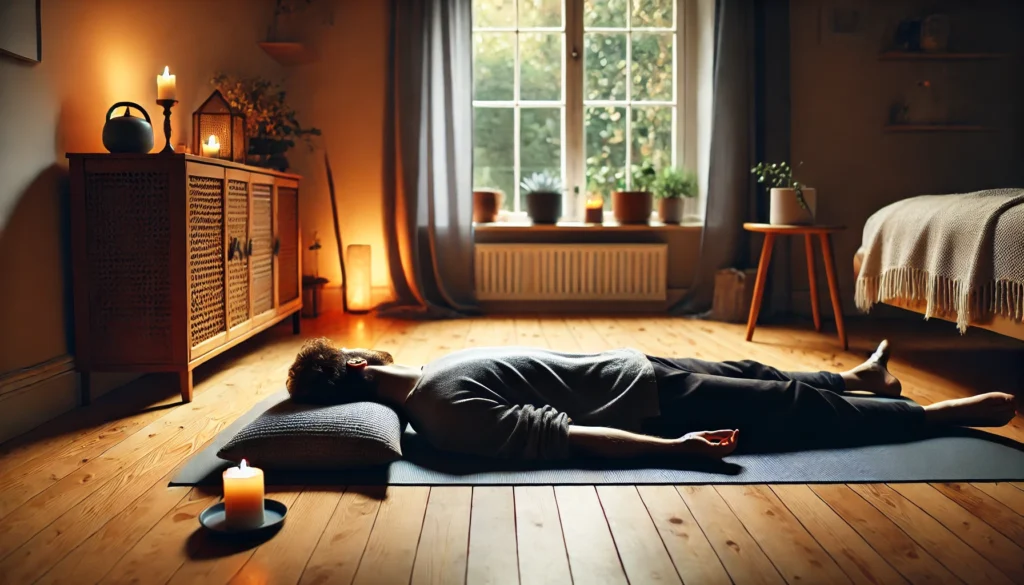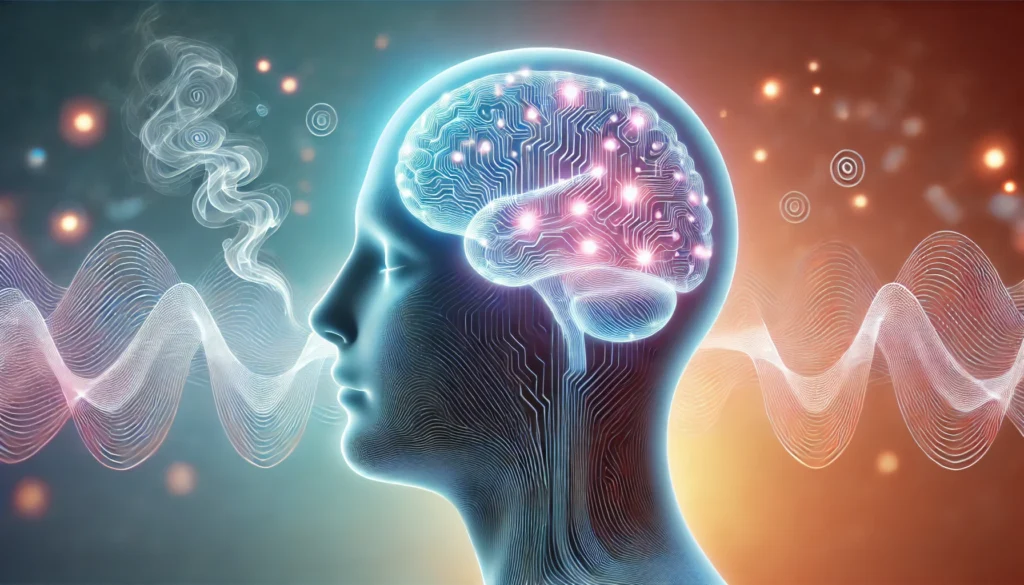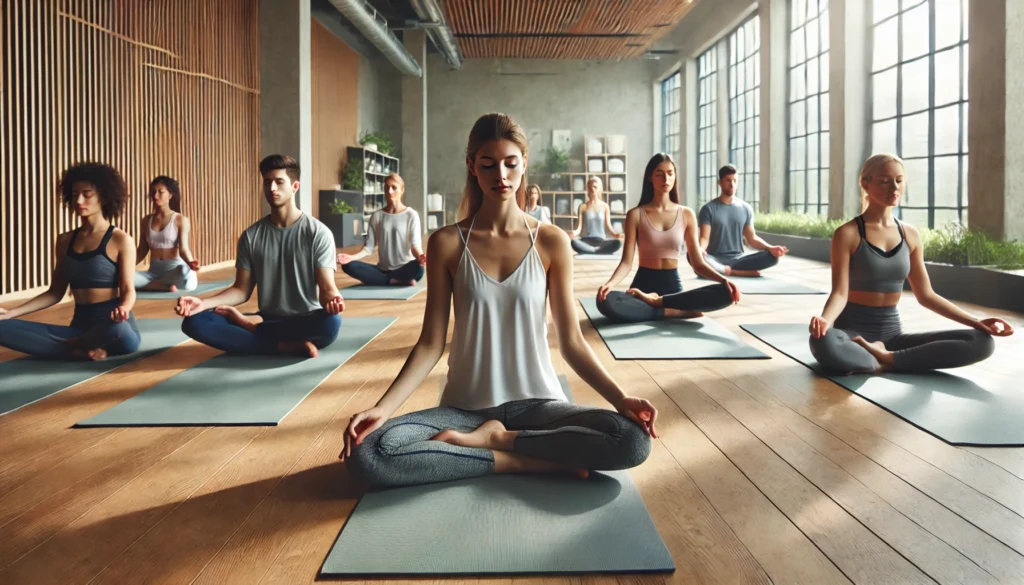Mindfulness meditation, one of the most popular types, involves focusing your attention on the present moment. This practice encourages non-judgmental awareness of your thoughts, emotions, and physical sensations. As you become more mindful, you can develop a deeper understanding of your thought patterns and emotional responses, leading to improved mental health.
You may also like: Natural Supplements for Effective Anxiety Relief

The Essence of Mindfulness
Mindfulness is about being fully present and engaged with the current moment. It requires observing your thoughts and feelings without judgment. This practice helps you step back from automatic reactions and fosters a deeper connection with your inner self.
Mindfulness in Daily Activities
Incorporating mindfulness into everyday activities can enhance your practice. Whether it’s mindful eating, listening, or walking, these moments can serve as mini meditations. This approach makes mindfulness accessible and applicable in various aspects of daily life.
Overcoming Challenges in Mindfulness
Beginners often struggle with maintaining focus during mindfulness meditation. It’s important to recognize that distractions are normal. By gently bringing your attention back to the present moment without self-criticism, you can gradually improve your concentration and deepen your practice.
Body Scan Meditation
Body scan meditation is a foundational technique in mindfulness practice. It involves lying down comfortably and paying attention to different parts of your body sequentially. Begin by focusing on your toes, and gradually move upwards to the top of your head. This practice helps in releasing tension and promoting relaxation.
Steps to Practice Body Scan
To begin body scan meditation, find a quiet, comfortable place where you won’t be disturbed. Close your eyes and start by focusing on your breath, then gradually bring your attention to each part of your body. Spend a few moments on each area, noticing any sensations without trying to change them.
Benefits of Body Scan Meditation
Body scan meditation is particularly beneficial for recognizing tension and stress in the body. It promotes relaxation by encouraging a deep connection between the mind and body. This practice can also enhance body awareness, helping you to notice subtle changes in your physical and emotional state.
Integrating Body Scan into Your Routine
Incorporate body scan meditation into your daily routine by setting aside time each day, perhaps before bed or after waking. Consistency is key to experiencing its full benefits. Over time, this practice can help you develop a more profound sense of peace and relaxation throughout your day.
Breath Awareness Meditation
Breath awareness meditation is a simple yet powerful technique. It involves focusing on your breath, noticing the inhalation and exhalation without trying to change it. This practice can help calm the mind, reduce stress, and improve concentration over time.
The Simplicity of Breath Awareness
Breath awareness is one of the most accessible forms of meditation, requiring no special equipment or preparation. Simply sit or lie down comfortably and bring your attention to your breathing. Notice the natural rhythm and sensations of each breath as it flows in and out.
Deepening the Breath Awareness Practice
As you become more comfortable with breath awareness, you can explore different techniques to deepen your practice. For instance, counting breaths or noticing the pause between inhalations and exhalations can enhance concentration and mindfulness.
Overcoming Obstacles in Breath Awareness
Beginners often encounter distractions during breath awareness meditation. It’s essential to approach these interruptions with patience and kindness. By acknowledging distractions and gently redirecting your focus to your breath, you can cultivate a more profound sense of calm and centeredness.
Meditation Techniques for Mental Health
Meditation has profound effects on mental health, offering a natural way to manage stress, anxiety, and depression. Here, we explore specific techniques that can be particularly beneficial for mental well-being.
Loving-Kindness Meditation
Loving-kindness meditation, also known as Metta Bhavana, focuses on cultivating an attitude of love and compassion towards oneself and others. The practice involves silently repeating phrases like “May I be happy, may I be healthy, may I be safe,” and extending these wishes to others. This technique is effective in enhancing empathy and reducing negative emotions.
Cultivating Compassion Through Metta
Loving-kindness meditation helps in developing a sense of empathy and compassion. By regularly practicing Metta, you can foster a kinder, more loving attitude towards yourself and those around you, ultimately improving your relationships.
Progressing in Loving-Kindness Practice
As you become more familiar with loving-kindness meditation, you can expand your practice to include not only loved ones but also neutral individuals and even those with whom you have conflicts. This expansion challenges you to cultivate compassion universally.
The Impact of Loving-Kindness on Mental Health
This meditation technique is known to reduce feelings of anger and resentment while promoting emotional resilience. By regularly practicing loving-kindness meditation, you can create a more positive and nurturing mental environment.
Guided Visualization
Guided visualization involves using mental imagery to achieve a state of relaxation and focus. This technique often involves listening to a guide who describes calming scenes or scenarios. Visualization can be a powerful tool for reducing stress, improving mood, and fostering a sense of peace.
The Power of Imagination in Meditation
Guided visualization taps into the creative power of your imagination. By picturing serene landscapes or comforting scenes, you can create a mental retreat that offers solace and peace, helping you unwind and recharge.
Structuring a Guided Visualization Session
To begin guided visualization, find a quiet space and listen to a guided meditation or create your own script. Focus on vivid details, such as colors, sounds, and sensations, to fully immerse yourself in the experience.
Benefits of Guided Visualization
This technique can enhance your ability to manage stress and anxiety, improve your mood, and increase overall well-being. By regularly practicing guided visualization, you can cultivate a more positive mindset and develop a deeper sense of relaxation.

Meditation Examples for Adults
Meditation is not a one-size-fits-all practice. Different techniques may resonate differently with each individual. Here are some examples that adults might find particularly engaging and beneficial.
Walking Meditation
Walking meditation combines the physical activity of walking with the meditative practice of mindfulness. It involves paying attention to the movement of your feet, the sensations in your body, and the environment around you. This practice can be especially helpful for those who find sitting still challenging.
The Rhythm of Walking Meditation
Walking meditation integrates the rhythm of your steps with mindfulness. By synchronizing your breath with your movements, you can cultivate a sense of flow and presence. This practice can be particularly grounding and centering.
Incorporating Walking Meditation into Daily Life
Find moments in your day to practice walking meditation, such as during a stroll in the park or a walk to work. Focus on each step and the sensations it brings, allowing distractions to pass without judgment. This practice can transform routine walks into moments of mindfulness.
Benefits of Walking Meditation
This form of meditation promotes physical health, enhances mood, and increases mindfulness. It’s a versatile practice that can be adapted to various environments, making it accessible and convenient for busy lifestyles.
Mantra Meditation
Mantra meditation involves the repetition of a word or phrase, known as a mantra, to focus the mind. The mantra can be spoken, whispered, or chanted silently. This practice helps in quieting the mind and can lead to deeper states of meditation.
Choosing a Mantra
Selecting a mantra is a personal process. It can be a traditional phrase, a personal affirmation, or a simple sound. The key is to choose something that resonates with you and supports your meditation goals.
Techniques for Mantra Meditation
Begin by sitting comfortably and closing your eyes. Repeat your chosen mantra silently or aloud, allowing it to guide your focus. If your mind wanders, gently return to the mantra, allowing its rhythm to center your mind.
Effects of Mantra Meditation
Practicing mantra meditation can lead to increased concentration, reduced stress, and a deeper sense of inner peace. Over time, this technique can help you develop a more profound connection with your inner self and enhance your overall meditation practice.
Future Implications of Meditation Practices
As research into meditation continues to evolve, its implications for mental health and well-being become increasingly significant. The integration of meditation with modern technology is paving the way for innovative practices, such as virtual reality meditation and biofeedback-enhanced sessions. These advancements have the potential to make meditation more accessible and tailored to individual needs.
Virtual Reality Meditation
Virtual reality (VR) meditation immerses practitioners in calming, 3D environments, enhancing the sensory experience of meditation. This technology can be particularly beneficial for individuals who struggle with visualization or need a more engaging practice.
Enhancing Meditation with Virtual Reality
VR meditation offers a unique opportunity to experience meditation in immersive environments. By using VR headsets, practitioners can transport themselves to serene landscapes, enhancing their focus and relaxation.
Accessibility and Personalization in VR Meditation
Virtual reality technology allows for personalized meditation experiences, catering to individual preferences and needs. This accessibility makes it easier for people with different backgrounds and experiences to engage in meditation practices.
The Future of VR in Meditation
As VR technology continues to advance, its potential in meditation practice grows. Future developments may include more interactive and personalized experiences, further enhancing the benefits of meditation for mental health and well-being.
Biofeedback and Meditation
Biofeedback involves using electronic monitoring to convey information about physiological processes. By integrating biofeedback with meditation, individuals can gain real-time insights into their body’s responses, allowing for more personalized and effective meditation sessions.
Understanding Biofeedback in Meditation
Biofeedback devices measure bodily functions such as heart rate and brainwaves, providing immediate feedback. This information can help practitioners adjust their meditation techniques in real-time, optimizing their practice.
Benefits of Biofeedback-Enhanced Meditation
By using biofeedback, individuals can achieve greater self-awareness and control over their physiological responses. This enhanced mindfulness can lead to improved stress management, increased focus, and overall better mental health.
Future Directions for Biofeedback in Meditation
As biofeedback technology evolves, it will become more integrated into meditation practices. This integration could lead to more personalized meditation experiences, tailored to the unique needs and responses of each practitioner.

Balancing Science with Practical Advice
Incorporating meditation into daily life requires a balance of scientific understanding and practical application. As you explore different techniques, consider your personal preferences and lifestyle. Start with short sessions and gradually increase the duration as you become more comfortable.
Creating a Meditation Routine
To make meditation a consistent part of your life, establish a routine. Dedicate a specific time and space for your practice, free from distractions. Consistency is key to experiencing the long-term benefits of meditation.
Designing Your Meditation Space
Create a dedicated meditation space that is peaceful and free from distractions. This can be a corner in your home with comfortable seating, calming decor, and perhaps some incense or a candle to set the mood.
Establishing a Meditation Schedule
Choose a time that fits seamlessly into your daily routine. Whether it’s first thing in the morning or before bed, consistency is crucial. Starting with just a few minutes and gradually increasing the duration can help build a sustainable practice.
Staying Committed to Your Routine
Sticking to a meditation routine requires commitment and patience. It’s normal to face challenges along the way, but by staying dedicated and adjusting your practice as needed, you can cultivate a lasting and rewarding meditation habit.
Tracking Progress and Adjusting Techniques
As you continue your meditation journey, periodically assess your progress. Reflect on the changes in your mental and emotional state and adjust your techniques accordingly. What works for one person may not work for another, so be open to experimenting with different practices.
Monitoring Your Meditation Journey
Keep a meditation journal to track your experiences and progress. Note any changes in your stress levels, mood, or overall well-being. This practice can provide valuable insights and motivation as you continue your meditation journey.
Adapting Techniques to Fit Your Needs
As you become more familiar with different meditation practices, don’t hesitate to experiment and adapt techniques to suit your needs. This flexibility allows you to tailor your meditation experience and maximize its benefits.
Embracing Change and Growth
Meditation is a dynamic practice that evolves with you. Embrace the changes and growth you experience along the way. By remaining open and adaptable, you can continue to deepen your meditation practice and enhance your overall well-being.
Conclusion
Meditation offers a wealth of benefits for beginners and seasoned practitioners alike. By understanding various techniques and their applications, you can embark on a journey towards enhanced mental health and well-being. Whether you choose mindfulness, loving-kindness, or a modern technological approach, meditation can be a transformative practice that enriches your life.
Embrace this ancient practice, and allow it to guide you towards a more balanced and peaceful existence. As you delve deeper into meditation, remember that the journey is as significant as the destination. Each moment spent in meditation is an opportunity to cultivate inner peace, resilience, and understanding, leading to a more fulfilling life.
Further Reading:
Which Type of Meditation Is Right for Me?
What is the best type of meditation?
Important Note: The information contained in this article is for general informational purposes only, and should not be construed as health or medical advice, nor is it intended to diagnose, prevent, treat, or cure any disease or health condition. Before embarking on any diet, fitness regimen, or program of nutritional supplementation, it is advisable to consult your healthcare professional in order to determine its safety and probable efficacy in terms of your individual state of health.
Regarding Nutritional Supplements Or Other Non-Prescription Health Products: If any nutritional supplements or other non-prescription health products are mentioned in the foregoing article, any claims or statements made about them have not been evaluated by the U.S. Food and Drug Administration, and such nutritional supplements or other health products are not intended to diagnose, treat, cure, or prevent any disease.


